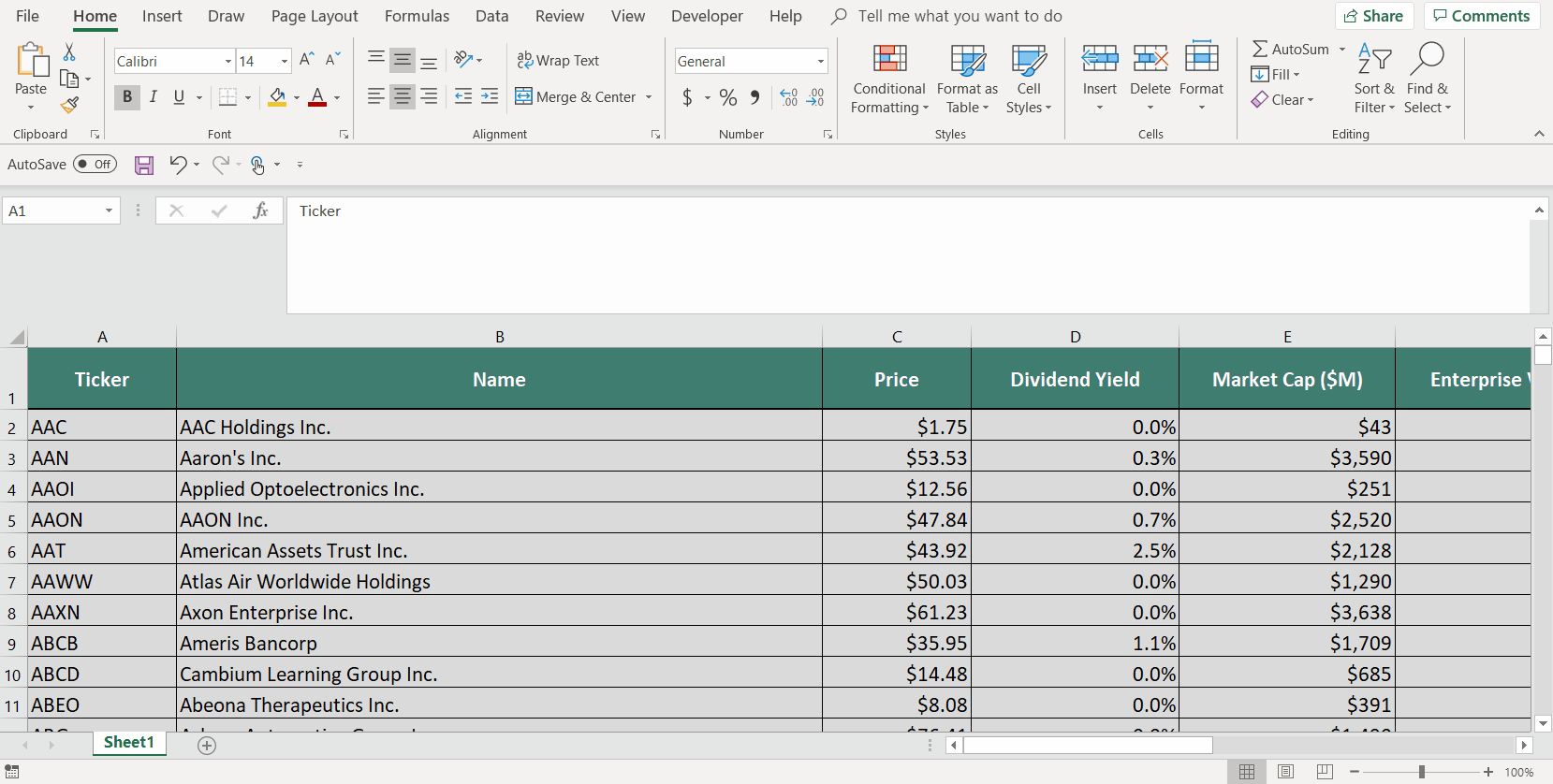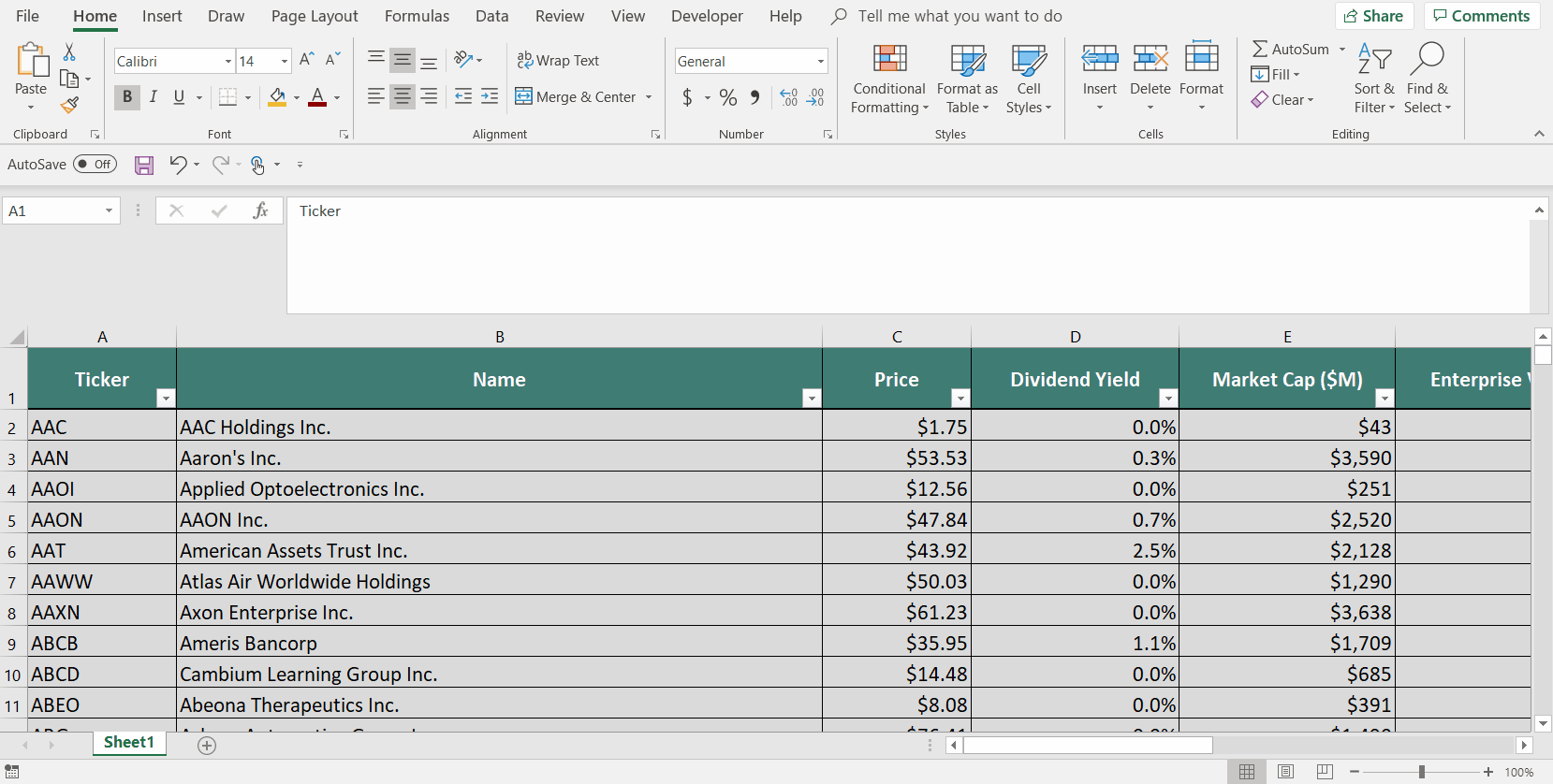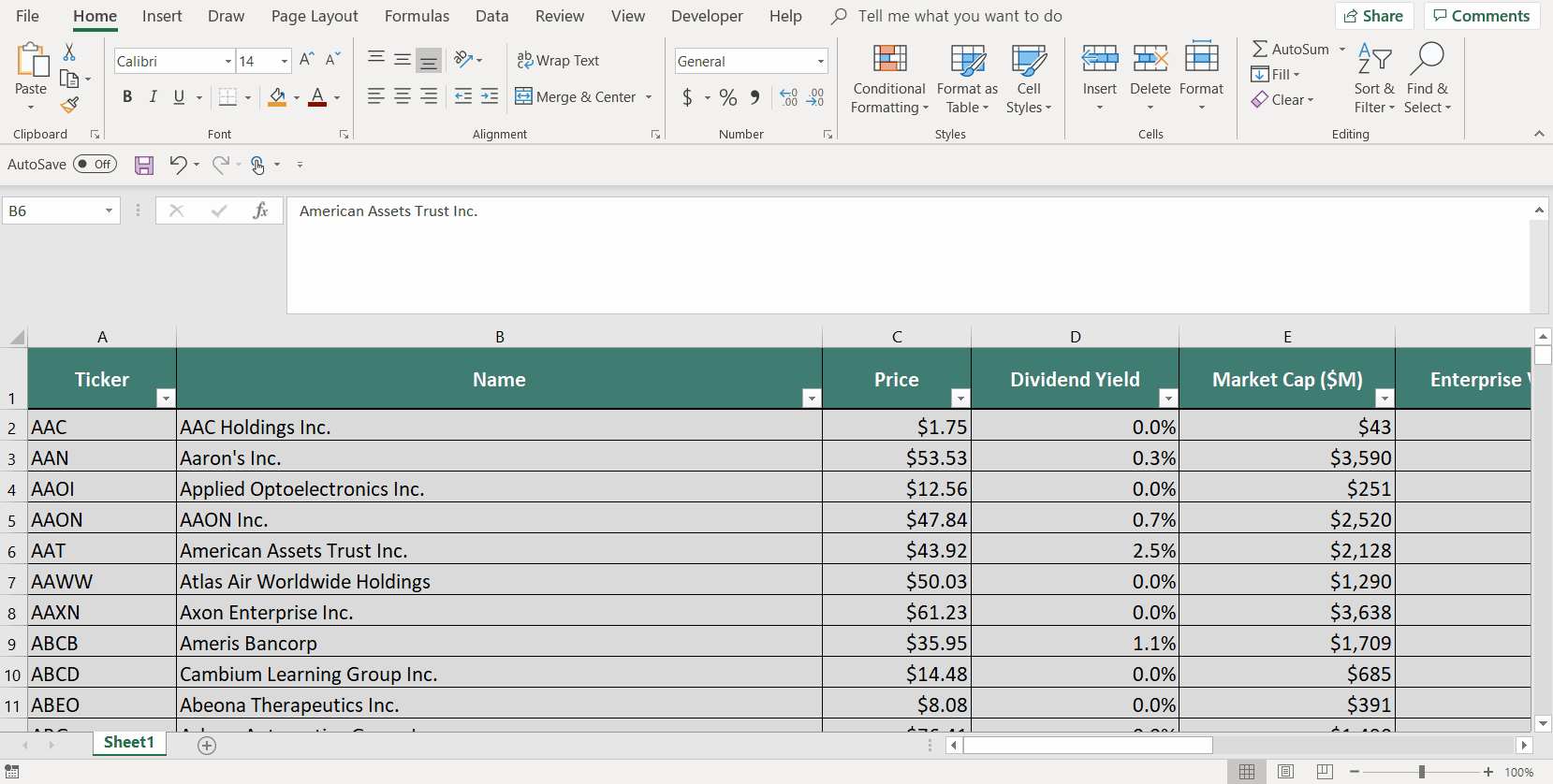Updated on March 10th, 2025 by Bob Ciura
Spreadsheet data updated daily
The Russell 2000 Index is arguably the world’s best-known benchmark for small-cap U.S. stocks.
Small-cap stocks have historically outperformed their larger counterparts. Accordingly, the Russell 2000 Index can be an intriguing place to look for new investment opportunities.
You can download your free Excel list of Russell 2000 stocks, along with relevant financial metrics like dividend yields and P/E ratios, by clicking on the link below:
Table Of Contents
- Russell 2000 Index Overview & Construction
- How To Use The Russell 2000 Stocks List To Find Investment Ideas
- Why Invest In Russell 2000 Stocks
- Russell 2000 Monthly Performance
- Final Thoughts & Further Reading
Russell Index Overview & Construction
The Russell 2000 Index is a subset of the Russell 3000 Index.
FTSE Russell maintains the Russell 3000 Index, which is comprised of the 4000 largest publicly traded U.S. companies. Note the confusing naming structure; the Russell 3000 actually has 4000 securities in it.
The index is reconstructed annually and updated quarterly with new IPOs (Initial Public Offerings).
The Russell 3000 Index is broken down into the following subgroups (which despite its name includes 4000 securities):
- Russell 1000: The 1000 largest Russell 3000 Index companies
- Russell 2000: Companies ranked 1,001 – 3,000 in size
- Russell Microcap Index: Companies ranked 2,001 – 4000 in size (overlaps with the Russell 2000)
How To Use The Russell 2000 Stocks List To Find Investment Ideas
Having an Excel document that contains financial information on each Russell 2000 stock can be tremendously useful.
This document becomes far more powerful when combined with a knowledge of how to manipulate data within Microsoft Excel.
With that in mind, this article will provide a tutorial on how to implement two actionable investing screens from the Russell 2000 Stocks List.
The first screen that we’ll implement is for stocks trading at price-to-earnings ratios below 15. These are small-cap stocks trading at attractive valuations and should avoid the valuation risk that accompanies investing in overpriced securities.
Screen 1: Small-Cap Value Stocks With Price-To-Earnings Ratios Below 15
Step 1: Download the Russell 2000 Stocks List near the beginning of this article.
Step 2: Highlight all columns.
Step 3: Go to the “Data” tab, then click “Filter.” See the image below for a walk through of steps 2 and 3.

The remaining stocks in this spreadsheet are Russell 2000 stocks with price-to-earnings ratios below 15 and positive earnings.
In the next screen we’ll show you how to implement an investing screen for Russell 2000 stocks that have high-dividend yields and reasonable payout ratios.
Screen 2: High-Yield, Reasonable Payout Ratio Small-Cap Stocks
Step 1: Download the Russell 2000 Stocks List at the link above, and set the columns to “Filter” (see steps 2 and 3 of screen 1).
Step 2: Go to the Dividend Yield column, click the filter arrow, go to numbers filter, click “greater than or equal to,” and add in 0.05.
Step 3: Go to the Payout Ratio column, click the filter arrow, go to numbers filter, and select “between,” and set to between 0 and 0.60. See the image below for a walk through of steps 2 and 3.
The remaining stocks in this spreadsheet have dividend yields of 5% or more and payout ratios below 60%.
This screen reveals small-cap dividend stocks with reasonable payout ratios for further research.
You now have a solid understanding of how to use the Russell 2000 stocks list to find investment ideas.
The remainder of this article will briefly describe the merits of investing in the Russell 2000 Index before explaining other resources that you can use to find investment ideas.
Why Invest In Stocks From The Russell 2000 Index
As mentioned previously, the Russell 2000 Index contains the domestic U.S. stocks that rank 1,001 through 3,000 by descending market capitalization.
The Russell 2000 is an excellent benchmark for small-cap stocks. The average market capitalization within the Russell 2000 is currently ~$3 billion.
Why does this matter? There are a number of advantages to investing in small-cap stocks, which we explore in the following video:
Small-cap stocks have historically outperformed large-cap stocks for two reasons.
Firstly, small-cap stocks tend to grow more quickly than their larger counterparts. There is simply less competition and more room to grow when your market capitalization is, say, $1 billion when compared to mega-cap stocks with market caps above $200 billion.
Secondly, many small-cap securities are outside the investment universes of some larger institutional investment managers. This creates less demand for shares, which reduces their prices and creates better buying opportunities.
For this reason, there are typically more mispriced investment opportunities in a small-cap index like the Russell 2000 than a large-cap stock index like the S&P 500.
Investors with a value orientation should keep this in mind when searching for their next purchase opportunity.
Russell 2000 Monthly Performance
The Russell 2000 ETF (IWM) generated negative total returns of -8.3% in February 2025. IWM under-performed the S&P 500 ETF (SPY), which generated negative total returns of -1.3% last month.
While the evidence points towards small-cap stocks outperforming over the long run, that has not been the case over the last decade when comparing IWM to SPY.
Over past 10 years, the S&P 500 ETF generated annualized total returns of 12.70% per year, versus 6.87% annual total returns for the Russell 2000 ETF.
This is a counter-intuitive finding, as many investors would expect small-cap stocks to outperform large-caps in a bull market.
We believe the extremely strong performance of large technology companies over the last decade is at least partially responsible for the superior performance of the large-cap S&P 500 relative to small caps over that time frame.
Final Thoughts & Further Reading
The Russell 2000 Index List is an excellent place to look for small-cap investment opportunities. However, it is not the only place where excellent investments can be found.
If you’re looking for exposure to stable large-cap stocks with solid dividend growth prospects, the following databases will prove more useful than the Russell 2000 Index List:
- The Dividend Aristocrats List: S&P 500 stocks with 25+ years of consecutive dividend increases
- The Dividend Kings List: with 50+ years of consecutive dividend increases – the Dividend Kings are the “best-of-the-best” when it comes to dividend longevity
- The High Dividend Stocks List: stocks that appeal to investors interested in the highest yields of 5% or more
- The Monthly Dividend Stocks List: stocks that pay dividends every month, for 12 dividend payments per year


